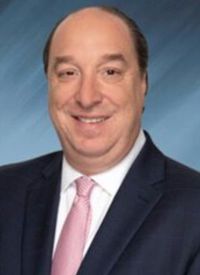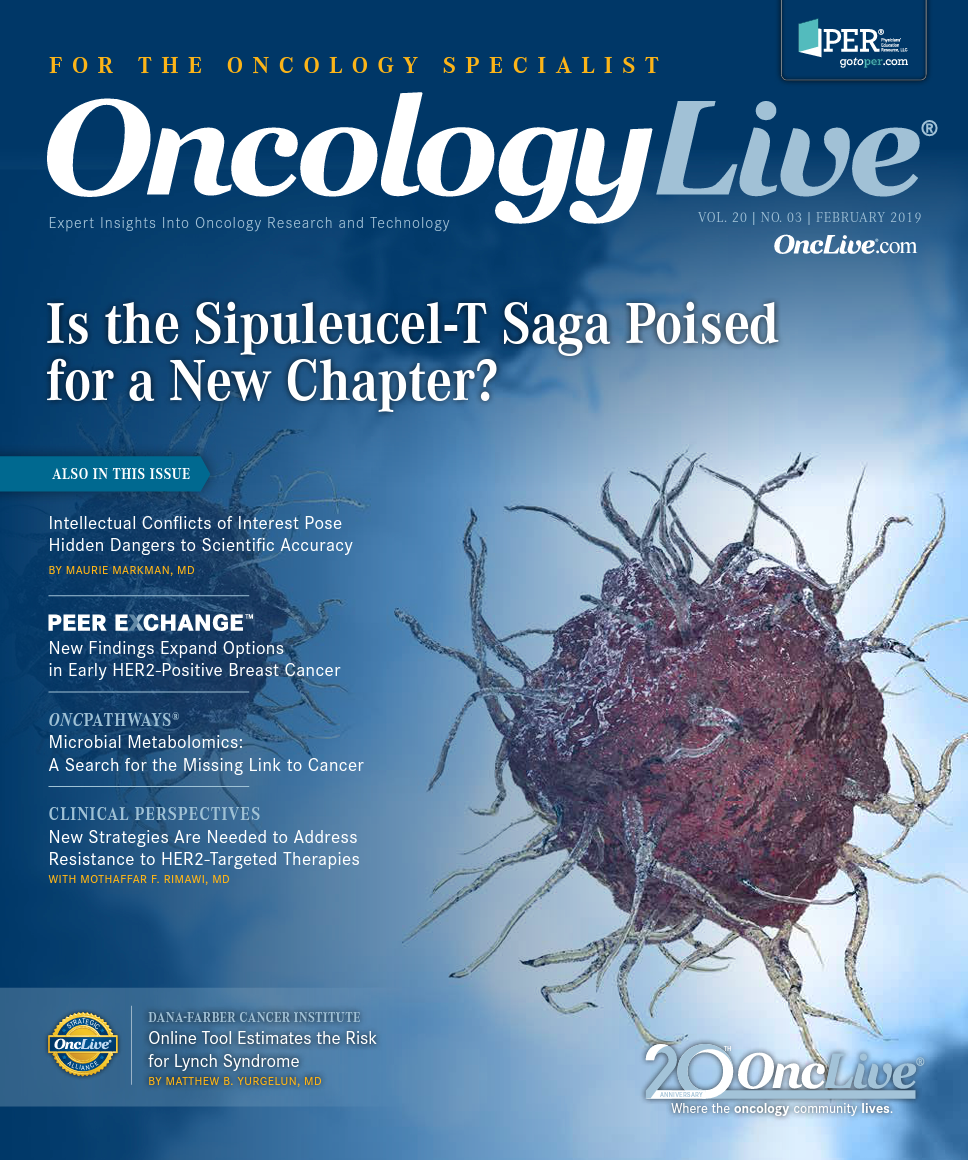Publication
Article
Oncology Live®
Heightened Risk for Natural Disasters Necessitates Advance Preparation in Oncology Community
Author(s):
With hugely destructive storms now almost routine—3 of the 5 costliest hurricanes on record occurred in 2017—the secret to practice readiness is constant review and analysis.
Todd Schonherz, associate professor of oncology and urology at Johns Hopkins Medicine

Todd Schonherz
When hurricane Irma hit Florida in 2017, it churned its way up the western coast of the state and moved directly over the largest cluster of independent practices in the Florida Cancer Specialists & Research Institute group. Nevertheless, the chain was able to reopen 86 of its 100 offices within just a few days of the storm’s passing, and it got the remainder open a couple of days later. Almost a year later, Florida Cancer Specialists & Research Institute narrowly avoided another direct hit when Hurricane Michael moved up through the Gulf with astonishing power and destructiveness, making landfall in the Tallahassee, Florida, area.
With hugely destructive storms now almost routine—3 of the 5 costliest hurricanes on record occurred in 2017—the secret to practice readiness is constant review and analysis, said Todd Schonherz, chief operating officer of Florida Cancer Specialists & Research Institute. “The plan isn’t about micromanaging every detail— it has to be fluid—but there are major things to be accomplished,” Schonherz noted. “It seems we have a hurricane or tropical storm hit a few times each year. We do a postmortem after each event to see what we could have done better.”
Across the country, many oncology centers have experienced major storms that forced them to take a hard look at their emergency planning. In some cases, practices have worked to ensure that patients are prepared in the event they are cut off from treatment.
Following Hurricane Katrina in 2005, which displaced over 1 million residents of the Gulf Coast, Children’s Hospital of New Orleans initiated an education program to make sure that families of oncology and hematology patients have supplies of medicine and evacuation plans in readiness when other storms hit. “Interventions instituted to allow greater access to care by our hematology/oncology patients after Hurricane Katrina resulted in better preparedness, easier acquisition of information, and possibly better continuity of care,” Raulji et al wrote in an April 2018 study of that effort (Table).1
Katrina devastated the New Orleans healthcare safety net, utterly transforming the city’s healthcare landscape and leaving many without access to care even a year after the storm. The storm’s impact reduced the number of hospital beds in New Orleans by more than half and forced nearly 4500 physicians to relocate, with just 1200 returning in the year after the storm. Shrinking patient volumes also caused healthcare centers to lose federal funding.2
Table. Post-Katrina Surveys Show Impact of Hurricane on Patient Emergency Planning1
The continuance of extreme weather events augurs similarly disruptive events. The year 2018 began with a crippling blizzard with unheard-of “thundersnow” that dumped more than 2 feet of snow on the East Coast. That was followed in April by tornadoes across the Midwest. An active hurricane season saw North Carolina and South Carolina battered by Florence in September and Florida taking the brunt of Michael’s force in October. In November, the largest and most destructive wildfires in California history devastated entire towns and killed dozens. “As the incidence of cancer and the frequency of extreme weather events rise, disaster mitigation is becoming increasingly relevant to oncology care,” noted the authors of a September climate report in Lancet Oncology.3 Robert “Bo” Gamble, director of strategic practice initiatives for the Community Oncology Alliance (COA), said the association works to prepare its member practices for adversity. The best way to do this is to educate them with examples of practices that have overcome such challenges. “That’s probably the most enlightening,” Gamble said. “Some people think about disasters and say, ‘I have to back up my computer system and keep my fingers crossed.’ It’s so much more than that.”
Practices need to be ready to field unexpected requests for assistance from their patients. These may take the form of needs that go well beyond the scope of oncology care. Gamble has found that some patients turn to their doctors for guidance and help with issues beyond treatment, such as coping with an imminent storm. “The role goes beyond caregiver because of the relationship they have with patients,” he said.
Lessons from Texas
One way to do that is by ensuring there are multiple communication methods in place. “Two-way communications are important in a disaster,” Gamble said. “Patients need efficient, up-to-date communications. How can they communicate with their care teams? How can teams make sure timely information is going out to patients and staff?”Communication is a challenge that Oncology Consultants of Houston, Texas, dealt with during August 2017’s Hurricane Harvey, a category 4 storm that caused extensive flooding and forced 20 Texas hospitals to close or evacuate.
Oncology Consultants’ practice administrator Alti Rahman, MHA, MBA, CSSBB, said the storm was a learning experience. “We had a very limited disaster plan prior to the storm. We’ve now put a lot of effort into our disaster plan, hoping we’ll never need to use it,” Rahman said. “This year, we ran a storm drill like schools run fire drills.” Oncology Consultants has 20 providers—16 doctors and 4 midlevel to advanced nurse practitioners— working in 11 locations in the Houston area. Harvey wasn’t the first storm to threaten Houston, so as the hurricane approached, the practice decided to follow the same plan that had worked previously: Luis T. Campos, MD, the organization’s president, would make the call about practice operations once the storm made landfall and it was possible to assess its effects.
But Harvey hit harder than anticipated, recalled Susan Sabo-Wagner, clinical director of Oncology Consultants. A day earlier than planned, she fielded calls from employees who were very concerned about conditionos. “It was, ‘I gotta go. My house is ready to flood,’” she said. The next day, the city unleashed 2 reservoirs before they burst, sending floodwaters into neighborhoods previously undamaged by the storm. Campos and Sabo-Wagner were also affected.
“My whole family was moving stuff upstairs because we thought the water was going to come in, and I’m trying to keep in touch with and communicate with staff,” Sabo-Wagner recalled, adding that Campos’ home was flooded. “I realized we couldn’t wait, and I tried to call Dr Campos, and I couldn’t get him.” When Sabo-Wagner finally did get the go-ahead to cancel the upcoming week’s appointments, she notified the business’s answering service so patients calling in would get the message. Then the service’s primary building flooded. So, too, did its backup facility.
As a result, the team at Oncology Consultants now tells others preparing for a natural disaster to have multiple plans in place to keep in touch with staff and patients and to make sure the vendors they use have similar contingencies in place. “Make sure they think about things like what they’ll do if the primary and secondary systems go out,” Rahman said.
Oncology Consultants wasn’t hindered just by the condition of its physical facilities. Staffing was an ongoing issue. “I’d see staff members on the news being evacuated. A medical assistant whose son was being treated for leukemia lost her house,” Sabo-Wagner recalled. “There were few ways to get new supplies of drugs. There were no flights,” she said.
But the group had a system that kept track of its existing drug inventory. Sabo-Wagner reached out to physicians and asked which treatments their most critical patients needed. She then checked to see whether the drugs were in stock. “We had enough medical assistants and a few imaging people and radiation folks on a limited basis,” she said. “We were driving drugs between offices. If your normal way to get from A to B is underwater, it could take a long time.”
Other Texas oncology groups stepped in and offered help. That worked well for patients who had evacuated to other metropolitan areas. Rahman also reached out to vendors to ask them to be flexible with accounts payable and to insurance companies about paperwork for payment deadlines. Almost all were willing to make accommodations in light of the disaster. “It certainly helped make our case that the storm captured the national media spotlight,” Rahman said. “It wasn’t only the top story in Texas but in the entire country, with pictures everywhere.”
Partnering for Care Continuity
The Center for Preparedness and Response at the Centers for Disease Control and Prevention in Atlanta, Georgia, recommends that patients in emergency situations be ready to protect their own health, have a plan to stay informed and in contact with others, and work with neighbors and friends to increase resilience. That information can also be applied to healthcare providers.Jose R. Davila, MD, an oncologist/hematologist in Arecibo, Puerto Rico, said partnering with outside oncology institutions was critical to recovery in the wake of Hurricane Maria in September 2017. Most cancer care on the island is delivered by small practices in community settings. The catastrophic storm knocked out not only electricity and internet service but also the cellular phone network. The only way patients in his largely rural area could find out whether a doctor’s office was open was to travel there, and doctors couldn’t communicate with each other, he said. “Having no communication, no electricity… it really felt like we were in a movie,” Davila said. “And when you’re dealing with an island and you want to help, you need a boat or a plane, and that made it even more challenging.”
Davila and other doctors reached out to organizations on the American mainland, including the Florida Society of Clinical Oncology, CancerCare, and COA. The response was swift. “The biggest need in Puerto Rico was money…. At one point, we helped them acquire [satellite] phones,” Gamble recalled. “We had to ask the question ‘What is your biggest need right now?’ The sat phones happened because they said, ‘We need to be able to talk to people.’ If we hadn’t asked that question, we wouldn’t have gotten that answer.”
Davila said the satellite phones made a huge difference. Island doctors were also able to use their mainland connections to make arrangements there for their most critically ill patients, confident they’d be well cared for. “We were very fortunate, given how bad things were.” Things got back online slowly, Davila said. Doctors also had success using WhatsApp, the free messaging phone app. They also began using the radio airwaves to let patients know which offices were open and when. Some moved their practices to hospitals, many of which had generators and were priorities as workers scrambled to restore power. To Davila’s surprise, access to cancer drugs on the island was not a problem. Many doctors were able to keep their stores from being damaged, and local supply companies were up and running fairly quickly. “We were lucky that medication for our cancer patients was not a problem,” he said. “One of the most inspiring stories is that we were able to treat patients.”
More than a year later, Davila said, Puerto Rico is still dealing with damaged infrastructure and a power grid in desperate need of upgrades. Doctors are planning for the next natural disaster. “Once it’s over, you can only be grateful. Then you have to look for ways to make the system better,” he said. “It’s going to happen again. We just need to be prepared.”
References
- Raulji C, Velez MC, Prasad P, Rousseau C, Gardner RV. Impact of Hurricane Katrina on healthcare delivery for New Orleans patients, 2005-2014. Pediatr Blood Cancer. 2018;65(12):e27406. doi: 10.1002/pbc.27406.
- Rodowitz R, Rowland D, Shartzer A. Health care in New Orleans before and after Hurricane Katrina. Health Aff (Millwood). 2006;25(5):w393-w406. doi: 10.1377/hlthaff.25.w393.
- Man RX, Lack DA, Wyatt CE, Murray V. The effect of natural disasters on cancer dare: a systemic review. Lancet Oncol. 2018;19(9):e482-e499. doi: 10.1016/S1470-2045(18)30412-1.





























%20(2)%201-Recovered-Recovered-Recovered-Recovered-Recovered-Recovered-Recovered-Recovered-Recovered-Recovered-Recovered-Recovered-Recovered-Recovered-Recovered-Recovered-Recovered.jpg?fit=crop&auto=format)
%20(2)%201-Recovered-Recovered-Recovered-Recovered-Recovered-Recovered-Recovered-Recovered-Recovered-Recovered-Recovered-Recovered-Recovered-Recovered-Recovered-Recovered-Recovered.jpg?fit=crop&auto=format)
